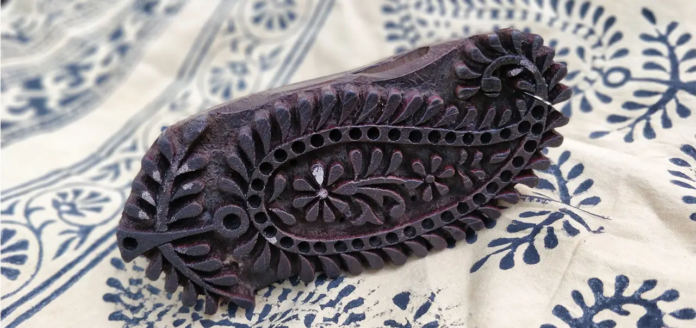
Madhya Pradesh, often referred to as the “heart of India,” is renowned for its rich cultural heritage and handicrafts. Among these treasures is the Bagh Hand Block Print, a traditional art form originating from the village of Bagh in the Dhar district of Madhya Pradesh. This craft not only showcases the skill of local artisans but also keeps alive India’s ancient handcraft traditions through the use of natural dyes and intricate designs. In this article, we will explore the origins of Bagh printing, its evolution, and its current value in India and the world.
The Origins of Bagh Print
Pinpointing the exact origin of Bagh printing is challenging, but it is believed to be over 1,000 years old. The art form derives its name from Bagh village, situated on the banks of the Baghini River. Its roots are traced back to Sindh (now in Pakistan), from where artisans of the Khatri community migrated to Madhya Pradesh around 400-500 years ago. The Khatri community, known for their expertise in textile dyeing and printing, originally practiced Ajrakh printing in Sindh. It is said that these artisans first settled in the Marwar region of Rajasthan, then moved to Manawar in Madhya Pradesh, and finally established themselves permanently in Bagh village by 1962.
The choice of Bagh was influenced by the Baghini River, whose water is rich in copper content. This water enhances the vibrancy of natural dyes, a defining feature of Bagh prints. The technique involves using wooden blocks to imprint geometric and floral patterns onto fabric. Initially, this art was used to create traditional garments like lugda (a type of sari) and ghaghra (skirts) for local tribal communities such as the Bhil and Bhilala. Artisans like Ismail Suleman Khatri played a pivotal role in refining and modernising this craft, elevating it to new heights.
Process and Characteristics
The process of Bagh printing is labor-intensive and eco-friendly. It relies on natural dyes, such as alizarin for red and a mixture of rusted iron and jaggery for black. The fabric is first soaked in a solution of salt, castor oil, and goat dung, then dried in the sun. Wooden blocks are then used to stamp designs onto the fabric, which is subsequently washed in the flowing waters of the river. This process ensures the colors are permanent and vibrant. Bagh prints are distinguished by their striking combination of red, black, and white hues, along with intricate patterns that set them apart from other printing techniques.
Current Value in India and the World
Today, Bagh printing has gained recognition not only in India but also globally. In 2008, it was awarded the Geographical Indication (GI) tag, certifying its regional uniqueness and quality. In India, Bagh prints are popular in sarees, dupattas, kurtas, bedsheets, and home décor items. Their price varies depending on the complexity and materials used. A typical Bagh print saree may cost between ₹1,500 and ₹5,000, while high-quality silk sarees can fetch ₹10,000 or more.
In the global market, the demand for Bagh prints is growing among environmentally conscious consumers and handicraft enthusiasts. Countries in Europe, the United States, and beyond have embraced it, with fashion designers and interior decorators incorporating it into their work. Internationally, a Bagh print product can range from $20 to $100 or more, depending on the design and fabric quality. Its appeal lies in its eco-friendliness and natural beauty, qualities that modern machine printing cannot replicate.
Bagh hand block printing is a vibrant symbol of Madhya Pradesh’s cultural heritage. From its origins with the migratory journey of the Khatri community to its current status on the global stage, this art form has come a long way. It serves as a source of livelihood for artisans while showcasing India’s rich handicraft tradition. Preserving and promoting this invaluable legacy is a collective responsibility, ensuring that future generations can continue to appreciate its beauty and significance.

